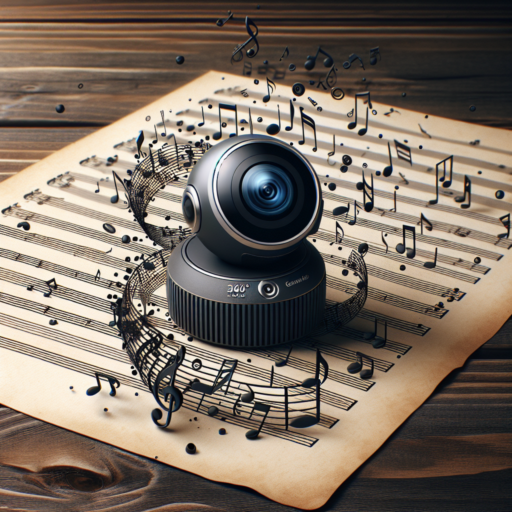No se han encontrado productos.
Do you need dive filters for GoPro?
When it comes to capturing stunning underwater footage with your GoPro, the importance of dive filters can’t be overstated. Dive filters serve a pivotal role in enhancing the quality of your videos and photos by correcting the colors that are often distorted under water. As you dive deeper, colors like red and orange quickly disappear, and without a dive filter, images can end up with a dominant green or blue hue. But do you really need dive filters for your GoPro to capture the true beauty of the underwater world?
Enhancing Color Accuracy
Dive filters are essential for any underwater photographer wanting to achieve color accuracy in their images. These filters act by compensating for the loss of red light as you dive deeper. By attaching the appropriate color filter, you can bring back the vibrant hues that are otherwise lost, providing a more realistic and visually appealing result. Whether you’re exploring a shallow coral reef or descending into the deeper blues, there’s a filter to match your needs.
Understanding the Different Types of Filters
It’s important to understand that not all dive filters are created equal, and the type you need may depend on the depth and conditions of your dive. For shallow water (up to 15 feet deep), a red filter is typically used to correct the blue-green color cast. For deeper waters, magenta filters help adjust for green hues. Moreover, for blue water diving, there are specialized red filters designed to handle the specific light conditions found at these depths. Each filter is tailored to enhance the natural beauty of the undersea environment, making your GoPro footage come alive.
Which filter to use for diving?
Choosing the right filter for diving is crucial for capturing the true colors and essence of the underwater world. The pressure, depth, and water composition significantly affect how light behaves, making the right filter a diver’s best ally for photography or simply enhancing the visual experience underwater.
Red Filters are the go-to choice for blue waters. They are perfect for restoring the red color lost as you descend. This type of filter works best in sunny conditions and at depths of 10 to 20 meters, where the blue color spectrum dominates the surroundings.
Magenta Filters shine in green water environments, typical of freshwater lakes and dive sites with a lot of algae. These filters help correct the excess green, bringing back a more balanced color representation. Divers exploring these conditions will find them indispensable for clarity and contrast.
Considerations for Choosing the Right Filter
- Depth: Shallower dives require different filters than deep sea explorations due to the varying levels of light absorption.
- Water Color: Blue or green water? The dominant hues in your diving location will dictate the filter you need.
- Weather Conditions: The amount of natural light available can significantly impact which filter will provide the best results.
What color GoPro filter for snorkeling?
When embarking on a snorkeling adventure, capturing the vivid undersea life through your GoPro camera enhances the experience manifold. The selection of the right color filter plays a pivotal role in this endeavor. Filters act as a bridge, balancing the color distortions caused by water at different depths, thereby allowing your GoPro to capture the underwater world in its true colors.
The choice of filter color primarily depends on the depth of your snorkeling activity and the water’s inherent color. For shallow water snorkeling, typically up to a depth of 15 feet, a red filter is highly recommended. This filter effectively counteracts the blue tint of clear water, ensuring that the colors captured in your footage are vibrant and true to life. At these shallow depths, the red filter helps in bringing back the red spectrum lost underwater, making your images pop with accurate colors.
For snorkeling in deeper or murkier waters, where sunlight penetration is less, a magenta filter becomes essential. This filter is adept at filtering out the excess green and blue hues prevalent in such conditions, thus preventing your footage from being washed out. It’s perfect for snorkelers exploring areas deeper than 15 feet or in locations where water carries a significant amount of suspended particles or algae.
In conclusion, understanding the role of color filters in enhancing your GoPro footage will significantly improve your snorkeling experiences. Whether you opt for a red or magenta filter, the key is to match the filter with the conditions of your dive to capture the mesmerizing underwater life in all its glory.
What is the best GoPro setting for underwater?
Finding the ideal GoPro setting for underwater adventures is key to capturing vivid, clear videos and photos beneath the waves. The best GoPro setting for underwater use often involves adjusting for low light conditions, maintaining color accuracy, and ensuring the footage is stable and clear.
Optimal Resolution and Frame Rate
For underwater filming, setting your GoPro to 1080p resolution with a frame rate of 60fps is recommended. This combination offers a good balance between high-definition quality and smooth motion, essential for capturing the fluid dynamics of aquatic life. High frame rates are ideal for slowing down footage in post-production, giving a dramatic effect to your underwater explorations.
Use of Filters
Underwater photography often suffers from a loss of color correctness due to the filtering effect of water on sunlight. Utilizing a red filter can help restore some of the natural colors that are lost at depth. For depths between 10 to 20 feet, a light red filter is beneficial. As you go deeper, a more intense shade may be necessary to counteract the increasing loss of red light.
Maximizing Image Stabilization
The latest GoPro models come equipped with advanced image stabilization features, like HyperSmooth. Activating HyperSmooth or any stabilization feature available on your device ensures your footage remains steady despite the challenges of underwater movement. Remember, while higher resolution settings can offer crisper images, they might limit the effectiveness of stabilization features due to increased processing requirements. Thus, balancing resolution and stability is key to optimal underwater footage.




